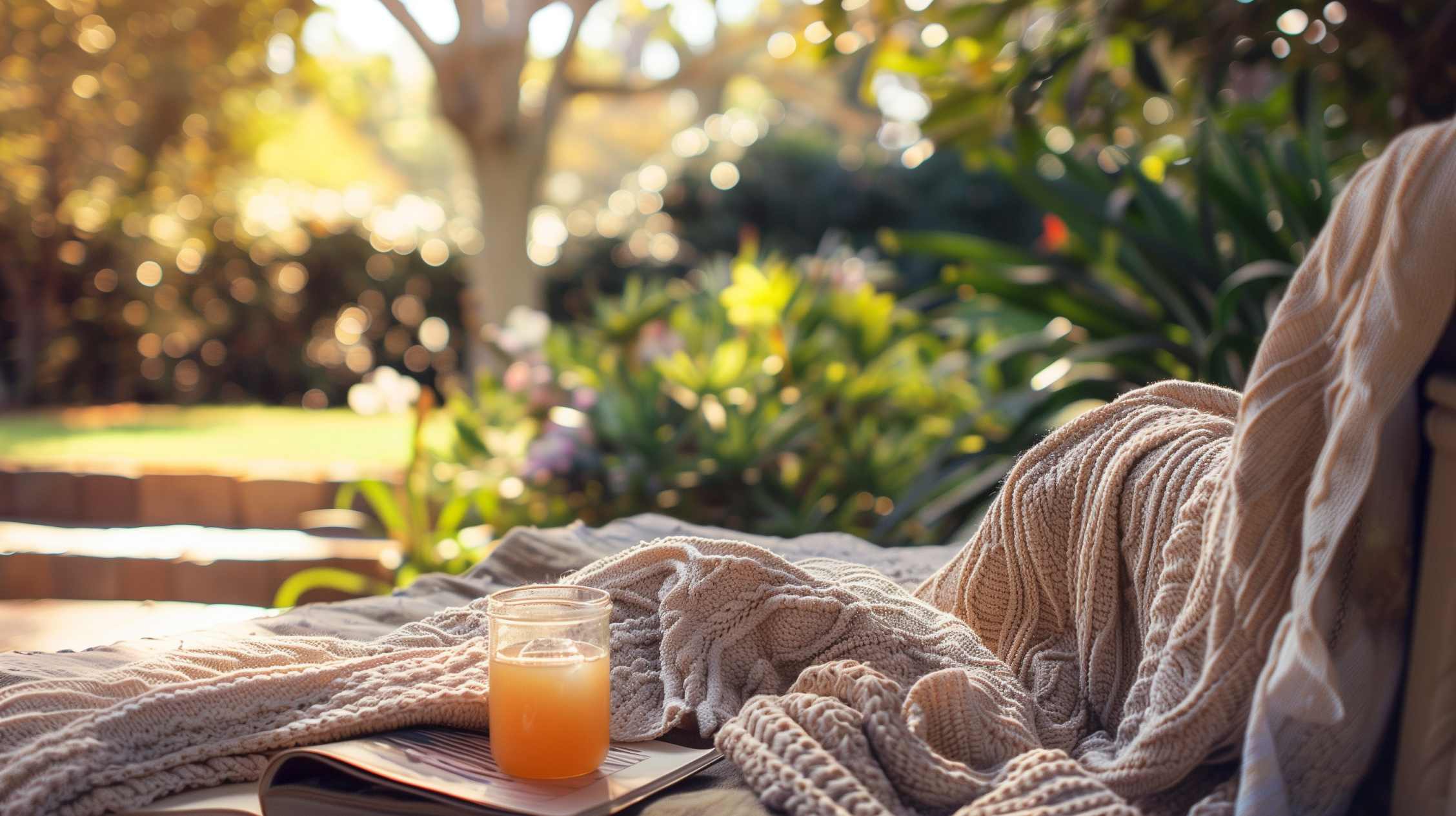The sun's finally showing up more often, and I don't know if it's just me, but I get that feeling to be outside. There's something special about those first truly warm days that awakens something in us - a craving for fresh air and open skies after all those months indoors.
But for us who live with ongoing illness, autoimmune disease, or cancer therapy, this season of seasonal change is ambivalent. Sunshine certainly does make us happier and create healing periods, no doubt. But heat, added effort, and maybe even the pressure to "get the most out of good weather" can spark flares, fatigue, and relapses.
I've learned through trial and error (more error, if I'm being truthful) that enjoying spring and summer with chronic illness requires doing things differently - taking into account both our desire to experience the beauty of the season and the reality of our bodies' limitations.
The Joy and Challenge of Sunshine
That first warm day after months of cold is magic - the world is waking up. Facebook is filled with people hiking, gardening, and going outdoors. It's easy to feel left out when your body can't keep up with that level.
What worked for me was remembering that nature offers its benefit with no time requirement. Research has indicated that even brief exposure to nature reduces stress hormones and improves mood. My "outdoor adventure" occasionally is as simple as ten minutes of sitting on my patio with birds to watch - and that counts.
Checking In With Your Body First
Before I head out, I've learned to pause and actually assess my energy reserves. Some mornings, I wake up already running on empty, but other mornings I might have a few more spoons to play with.
I prefer mornings or late afternoons usually - light is milder, temperatures more moderate, and my body more likely to accommodate. Even when I have a good day, I try to plan rest time afterward, knowing that even enjoyable activities consume energy my body needs to expend to recuperate from.
Gentle Ways to Be Outside
You don't have to climb mountains, complete a marathon, or do any exercise to experience nature's benefit. Some lower-energy outdoor activities that still provide that nature interaction:
- Reading or journaling in a porch, balcony, or open-windowed chair
- Reading or journaling in a shaded tree seat
- Cloud watching (something I grew up doing that still provides comfort)
- Seated container gardening
- Very short, level walks with resting places along the path
- Eat a meal outside
If walking or standing is challenging, having a portable chair can open up many outdoor spaces. Even some parks now have all-terrain wheelchairs - something to look into if that would allow you to access natural spaces.
Dressing for Unpredictable Weather and Comfort
Spring weather is notoriously unreliable. One day sun, the next cold wind. Layering is essential, especially when your body can struggle to warm up.
We have heard people using our IV Zip Hoodie arms as ventilation!
Sun protection becomes necessary too - especially for us on meds that increase photosensitivity. A hat, sunscreen, and glasses aren't suggestions; they're necessities.
Water, Water, Everywhere
Dehydration sneaks up quickly in warm climates and can worsen virtually every symptom of chronic illness. I have water in front of me at all times when I'm outside.
The Take Your Meds Tumbler has come in handy for outdoor use as it keeps things cold and carries medications - tackling two problems simultaneously when I am going to be out for several hours.
Sun Sensitivity With Autoimmune Conditions
When people have conditions like lupus or medications that have photosensitivity side effects, exposure to the sun needs to be done with increased caution. It doesn't involve avoiding it completely, but rather modifying:
- Get shade on a regular basis - under trees, umbrellas, or awnings
- Investigate UPF clothing that physically blocks harmful rays
- Plan outdoor activity in early morning or late day when UV index is smaller
I always consult with my doctor about how my specific medications and sun exposure blend, because it can change based on dosage changes or new medications.
When Going Outside Isn't Possible
There are times when venturing outdoors just isn't possible. On such occasions, I've come to bring aspects of nature indoors:
- Opening windows to let fresh air move in
- Having bird feeders in view from indoors
- Keeping fresh flowers or easy-care plants handy
- Listening to sounds of nature (rainfall is my go-to favorite)
These small details help to keep one connected to the outdoors even when actually being there is not an option.
Respecting Recovery Needs
Even short forays outside sometimes require serious recovery time afterward. It's also been important to learn how to recognize early warning signs of exhaustion- for me, that is dizziness amplified and a certain type of fatigue which feels as though gravity doubled its hold.
Having a "recovery station" in place prior to going outside aids- water, medications, cooling devices if necessary, and comfortable resting areas smooth the transition back inside.
Finding Connection Without Exhaustion
The warmer weather's social nature is not without its challenges. When friends are planning day-long beach trips or noonday barbecues, juggling the desire to connect with the needs of your body is hard.
Some of the tactics that have helped me:
- Suggesting shorter, more planned-out hangouts as an alternative to free-for-all type activities
- Inviting friends to meet me at a park where I can sit easily while they play more vigorously
- Being upfront about my needs and boundaries prior to the event
- Having a transportation strategy that enables me to depart when necessary, not when everybody else is ready
Your Definition of Outdoor Recreation Is Real
There is no one "right way" to enjoy nature. Your definition may be different than others', and it may be different from day to day based on your symptoms and energy levels.
Whether it's five minutes observing leaves rustle in the wind or an hour reading in a hammock, any amount of time spent connected with the natural world matters. The point isn't maximizing time spent outside - it's maximizing comfort and joy within whatever time your body can manage.
Trust yourself. Guard your energy. And don't forget that nature doesn't require performance or productivity - it's just there to be felt, however works best for you.
What is your favorite part about your low-energy connect-with-nature activities when it gets warm outside? I'd love to hear your approach and add some new ideas to mine.



It's Heating Up Outside, and Still Freezing Inside: The Importance of Adaptive Clothing Throughout the Year
IBS or Something More? How to Know When to Ask for More Answers